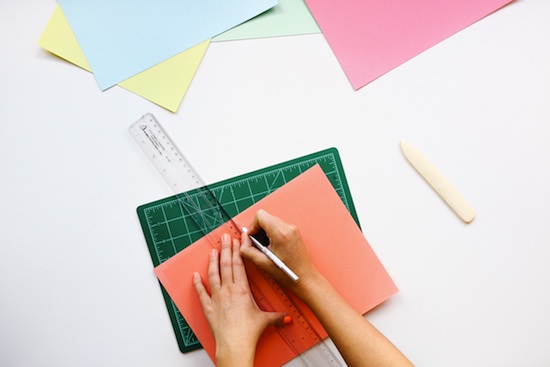
Sometimes no matter how hard you try, a math concept will not ‘click’ with your child by using traditional teaching methods and math materials. It could be because they are a visual or kinesthetic learner. If they are, they may need to see and play around with other manipulatives before they get it. Or, your child might just be bored of doing a bunch of worksheets and need something new to regain interest. Either way, you can easily create some math manipulatives at home that mimic some of the materials you may find in your child’s classroom, but don’t cost a fortune.
Keep things colourful with math materials
The first thing to remember when making math manipulatives is to include different colours. Visual learners in particular will benefit from this, as bright colours will not only be visually stimulating to get them engaged, but can help them learn math concepts through colour association. For example, if you teach them to associate one colour with one operation, say blue for addition, that might resonate with them more than the simple subtraction symbol.
Adding, subtracting, multiplying, and dividing with bottle caps
One idea to ease yourself into making math manipulatives is to write a bunch of numbers on bottle caps for practice with addition, subtraction, multiplication, and division. You can have a pile of these numbered bottle caps, and you or your child can select a few to form an equation.
This is an easy way to use math materials to get your child practicing solving equations, while switching it up from a boring old worksheet. One way to incorporate colour here is to make the numbers one of four different colours, so that each colour represents an operation. You can stick to one operation for each equation, say addition, or if your child is ready to learn order of operations you can mix them all together.
Another use for bottle caps: make a multiplication table
Another math manipulative you can make at home is a multiplication table out of bottle caps. This will require quite a few bottle caps: 100 if you want to do a full 10×10 table. But if you collect bottle caps easily in your house this is the perfect way to use them.
Start by numbering 1-10 on two strips of paper and place them across the top and left sides of a square of cardboard or any other hard material. Then, fill in each row with 10 bottle caps. Your child can put beads or beans in the caps to visually see how much 6×4 or 8×2 equals. See this link for a visual example (though the writing is in Italian).
Put a creative spin on ordinary integer tiles by making your own
If your child is learning to work with integers, they might have had the opportunity to work with integer tiles at school. When learning to add and subtract with integers, integer tiles can be very useful to help kids see what is happening visually.
Instead of trying to get your hands on expensive math tiles, make some with your child out of paper. Use fun colours or pictures to make them more visually appealing. For example, flowers could be positives and fish could be negatives. Or you could even just colour in positive tiles with red markers and negatives with blue markers. This can turn into a fun craft and an easy way to learn integers using simple math materials at home.
These are just a few examples, but hopefully this gives you an idea of how easy it is to make math materials right at home! Don’t be afraid to get creative! Try to recreate manipulatives you see in your child’s classroom using simple materials from around your house.




